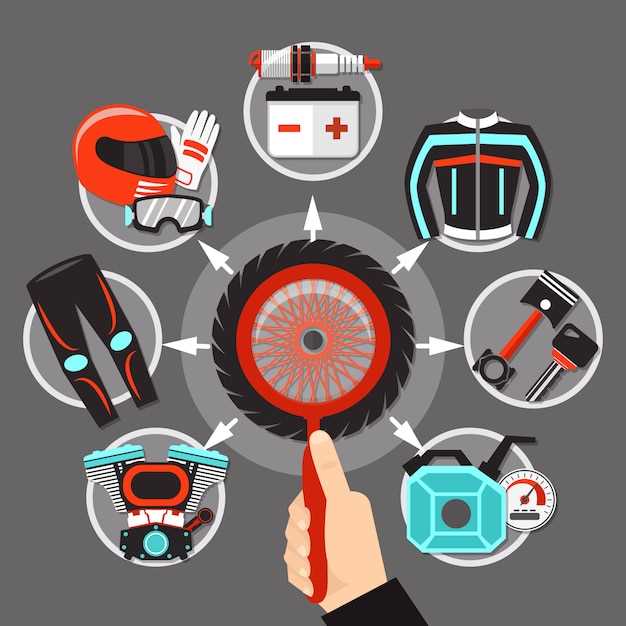
In the world of driving, safety should always take precedence. Whether you are a casual driver or a racing enthusiast, having the right safety gear is essential for protecting yourself on the road. While most individuals recognize the importance of seat belts and airbags, there are additional items that can significantly enhance driver safety. This article delves into the must-have safety gear that every driver should consider, ensuring not only compliance with regulations but also peace of mind while driving.
One of the most critical pieces of safety equipment in high-speed scenarios is the helmet. Initially associated with motorsports and biking, helmets have become increasingly relevant for everyday drivers, especially those engaged in racing or off-road activities. A quality helmet can provide crucial head protection, mitigating the risks posed by accidents or collisions. With advancements in technology, modern helmets incorporate lightweight materials and superior cushioning, making them both safe and comfortable for extended use.
When it comes to racing, the significance of adequate safety gear cannot be overstated. Beyond helmets, drivers need a comprehensive set of protective clothing, including fire-resistant suits and gloves. These items are designed to shield drivers from potential hazards during high-octane events. The focus on safety gear is not merely a trend; it’s a fundamental aspect of responsible driving, highlighting that the best defense against accidents is always preparation and proper equipment.
Choosing the Right Helmet for Optimal Protection

Selecting the appropriate helmet is crucial for ensuring optimal protection while driving. A well-fitted helmet can significantly mitigate the risk of head injuries in accidents. When choosing a helmet, it’s essential to consider several factors to ensure it suits your specific needs and driving style.
Firstly, ensure your helmet meets the necessary safety standards. Look for certifications from recognized organizations such as DOT, ECE, or SNELL, which indicate that the helmet has undergone rigorous testing. These certifications guarantee that the helmet can effectively absorb impact and provide adequate protection in the event of a crash.
Next, consider the size and fit of the helmet. A helmet should fit snugly without causing discomfort. To find the right size, measure the circumference of your head just above the ears and refer to the manufacturer’s sizing chart. A helmet that is too loose may come off during an accident, while one that is too tight can cause pain and distraction.
Ventilation is another important aspect. A well-ventilated helmet helps keep the rider cool and comfortable, especially during long drives. Look for adjustable vents that allow for customized airflow based on weather conditions.
Additionally, think about the type of use. Different helmets are designed for various driving scenarios–whether for racing, touring, or casual riding. Choose a helmet that suits your driving style and intended use for the best protection and comfort.
Lastly, examine the materials used in the helmet’s construction. High-quality helmets typically use a combination of polycarbonate, fiberglass, or carbon fiber, offering durability and lightweight convenience. The inner padding should provide comfort and be removable for cleaning purposes.
Investing time in choosing the right helmet is essential for any driver. By prioritizing safety and comfort, you not only reduce the risk of injury but also enhance your overall driving experience.
Selecting a Racing Suit That Meets Safety Standards

When it comes to motorsport, ensuring your safety on the track starts with selecting the appropriate racing suit. A racing suit is designed to provide protection from fire and abrasion, making it a critical component of your safety gear. It is essential to select a suit that meets specific safety standards set by reputable organizations such as the FIA (Fédération Internationale de l’Automobile) or SFI (SFI Foundation, Inc.).
The first step in choosing a racing suit is to verify its certification. The FIA 8856-2000 or SFI 3.2A standards indicate that the suit has been rigorously tested for fire resistance. These certifications provide assurance that the material can withstand high temperatures, protecting the driver in the event of a fire.
Next, consider the material of the racing suit. Most suits are made from inherently fire-resistant fabrics or treated materials. Common choices include nomex, a popular fabric known for its heat and flame-retardant properties. Look for suits that also offer breathability and moisture-wicking features to enhance comfort during long races.
Another critical factor is the fit. A properly fitting racing suit should allow for a full range of motion without being overly loose, as excess fabric can become a hazard in the event of an accident. A suit that fits well will not only enhance performance but also ensure that protective gear, such as a racing helmet, can be worn comfortably without obstruction.
Lastly, don’t overlook additional features, such as reinforced stitching, fire-resistant zippers, and pockets designed for safety equipment. These elements can increase the durability and functionality of your racing suit, providing an added layer of security while you’re on the track.
Additional Safety Accessories Every Driver Should Consider
While the basics of safety gear are essential for every driver, enhancing your safety with additional accessories can significantly improve your on-road experience. One vital accessory to contemplate is a high-visibility safety vest. This can be particularly useful during roadside emergencies, ensuring that other drivers see you clearly.
Another noteworthy item is a first aid kit, which can be a lifesaver in case of minor injuries. A well-stocked kit should include bandages, antiseptics, and other essential supplies that can address common injuries on the road.
For those who may find themselves in more adventurous situations, a quality driving suit is worth considering. While traditionally associated with motorsports, a driving suit made from fire-resistant materials can enhance safety in case of accidents, especially for high-speed driving activities.
A durable helmet is another valuable accessory, particularly for motorcycle riders or those engaging in off-road driving. Helmets provide crucial head protection and can significantly reduce the risk of serious injury during accidents.
Investing in tire pressure monitoring systems can also help protect drivers. These systems alert you when tire pressure drops, reducing the chances of blowouts or loss of control due to underinflated tires.
Finally, consider portable jump starters, which can help in case of a dead battery, ensuring you are not left stranded. Having these additional safety accessories can enhance your preparedness and overall safety on the road.


